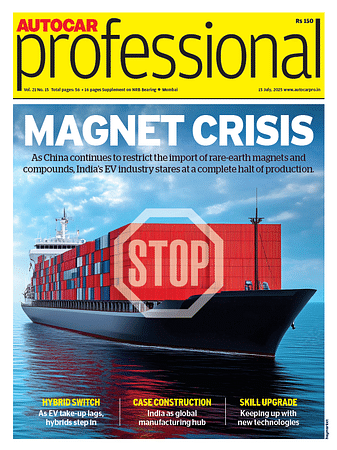Continental tests 5G for connected car technology
There is a growing push towards smart cars, connected cars which not only has minimal impact on environment but also focuses on safety.
Continental has started a joint research and development cooperation with Japanese telecommunication giant NTT Docomo, to enhance connected infotainment functions and build foundation for cellular based vehicle-to-vehicle everything (V2X) wireless communication systems.
The two companies during Automotive Engineering Exposition 2017 in Yokohama and Wireless Japan Expo, demonstrated a prototype application of 5G mobile communications technology. It is designed to enable a step-change in transmission speed, quality and speed of response (latency). The technology will enable speed upto 10 gigabites per second (Gbps) for downlink speeds and drastically reduce latency times to as low as 1 millisecond (1 msec) in a wireless link, that is not possible with today’s 4G technology.
By trying out prototypical applications of 5G the company expects to gains a deep understanding of practical details and potential fields of further research. “By combining Continental’s more than 20 years of automotive connectivity know-how with NTT DOCOMO’s leading 5G expertise, we will be ready to reap the benefits of the new technology once it is fully available from around 2022,” said Johann Hiebl, head of Continental’s business unit Infotainment & Connectivity.
Currently, most automotive trends involve connectivity: greater driving safety is not only based upon sensor networks in the car and networked sensor signal interpretation but also on additional information from outside the car. The company is banking on the improved connectivity possible through 5G networks, that can help share data between vehicles including high density platooning, live map updates, sensor sharing that would help for driver assistance but also pave the way ahead for automated driving.
The company claimed that automated driving which was an important step towards accident-free driving (vision zero) was hardly conceivable without the electronic horizon (eHorizon) that integrates digital map data with sensor data for up-to-date maps and real-time traffic information. The company expects to reap the benefits from around 2022 when the technology would be fully available.
RELATED ARTICLES
SIAM Conclave Explores Sustainable Strategies for Automotive Logistics
Stakeholders discuss multimodal transport, digital innovation, and sustainable practices to improve efficiency and resil...
Varroc Appoints Padmanabh Sinha as Independent Director
Sinha returns to Varroc’s Board with over 25 years of investment experience across private equity and technology.
Railways To Introduce More Specialized Wagons For Vehicle Transportation: Hitendra Malhotra
Hitendra Malhotra, a member of the Railway Board for Operations & Business Development at the Ministry of Railways noted...





 25 May 2017
25 May 2017
 9895 Views
9895 Views





 Sarthak Mahajan
Sarthak Mahajan


 Shruti Shiraguppi
Shruti Shiraguppi

 Kiran Murali
Kiran Murali

